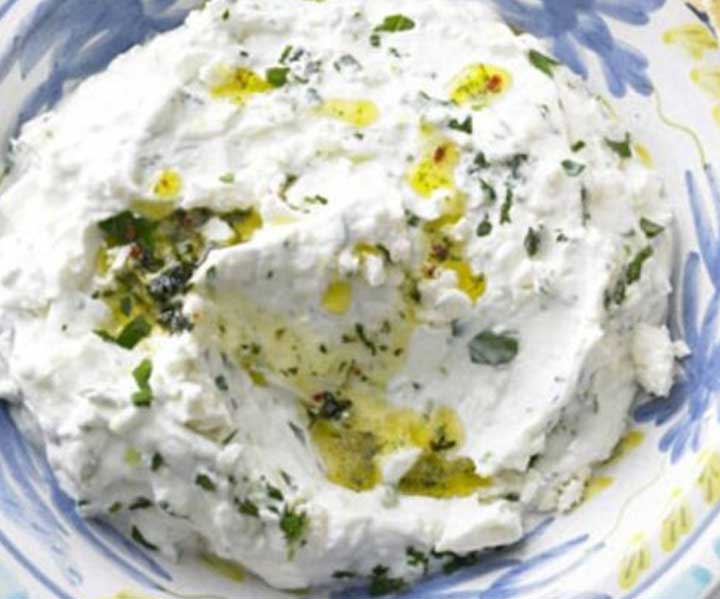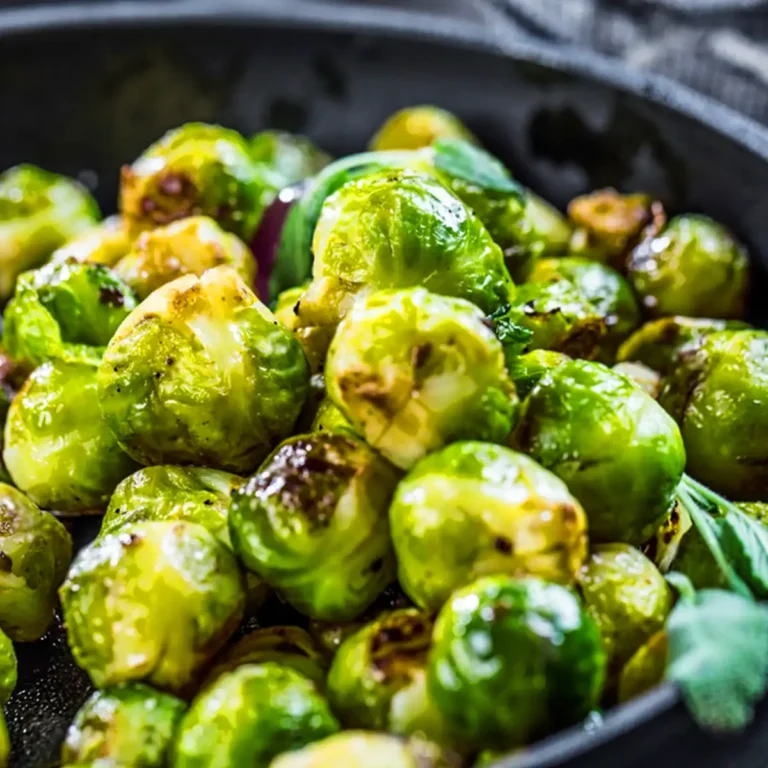Rouladentopf ohne Fertigsoßen Rezept
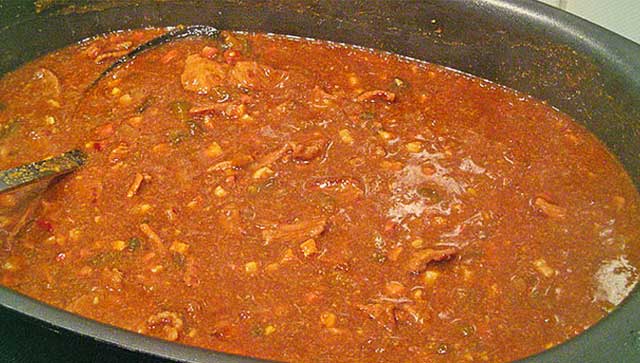
Rouladentopf ohne Fertigsoßen – Hausgemachter Genuss für echte Fleischliebhaber
Wer einen rouladentopf ohne fertigsossen sucht, möchte meistens genau eines: den echten Geschmack wie bei Oma, ohne künstliche Zusätze oder Pulver aus der Tüte. Ich kenn das nur zu gut! Früher hab ich beim Kochen oft auf Fertigsoßen zurückgegriffen (Bequemlichkeit siegt halt manchmal). Bis ich verstanden hab, wie viel intensiver und ehrlicher so ein rouladentopf hausgemacht schmeckt, wenn alles frisch und selbst gemacht ist. Heute zeig ich dir, wie du ganz einfach einen rouladentopf rind ohne Tüte zauberst, der genauso würzig, sämig und herzhaft wird wie das Original – nur eben ohne Abkürzungen.
Warum viele auf Fertigsoßen verzichten möchten
Hast du dich auch schon mal gefragt, was eigentlich alles in diesen Tüten steckt? Viele wollen heute bewusster essen, wissen, was drin ist, und auf unnötige Zusatzstoffe verzichten. Gerade bei so einem klassischen Gericht wie dem rouladentopf rezept lohnt sich der kleine Mehraufwand. Es schmeckt einfach voller, runder, irgendwie „richtiger“, wenn die Soße aus echten Zutaten entsteht. Außerdem: Die Zubereitung ist gar nicht schwer – du brauchst nur ein bisschen Zeit und Geduld (und vielleicht einen guten Kochlöffel, um den Bodensatz abzukratzen!).
3 wichtige Schritte für eine sämige Soße ganz ohne Tüte
Im Laufe der Jahre hab ich so einige Fehler gemacht. Zum Beispiel das Fleisch zu früh gesalzen – dann wird’s schnell zäh. Oder zu wenig angeröstet, dann fehlt das Aroma. Damit dir das erspart bleibt, hier meine drei entscheidenden Kniffe für einen gelungenen rouladentopf ohne tüte:
- Brate das Fleisch portionsweise scharf an, nur so bildet sich das typische Röstaroma.
- Die Zwiebeln lange genug schmoren lassen, bis sie goldgelb sind – das gibt Süße und Tiefe.
- Den Bratensatz mit Rotwein ablöschen und unbedingt abkratzen – das ist der Schlüssel zu einer kräftigen Soße!
Ich geb zu, beim ersten Mal hab ich den Schritt mit dem Abkratzen einfach überlesen. Die Soße war fad und dünn. Seitdem weiß ich: Jede Minute, die du hier reinsteckst, lohnt sich doppelt.
Welche Zutaten bringen den klassischen Rouladengeschmack?
Für mich lebt ein echter rouladentopf hausgemacht von der Kombination aus Fleisch, Zwiebeln, Bacon und den säuerlichen Gurken. Ich hab früher mal gedacht, Gurken gehören nur in die klassische Roulade, aber im Topf sorgen sie für den perfekten Kontrast zur würzigen Soße. Und ein bisschen Senf? Muss einfach sein! Wer mag, nimmt noch getrocknete Steinpilze dazu – die machen den Geschmack richtig rund.
Zutatenliste für ein authentisches Geschmackserlebnis
- 500 g Roulade(n) vom Rind in feine Streifen geschnitten
- 4 Zwiebel(n), in dünne Halbmonde geschnitten
- 200 g Bacon, gewürfelt
- 2 Gewürzgurke(n), gewürfelt
- 2 EL Senf
- 750 ml Brühe
- 150 ml Rotwein
- evtl. Steinpilze, getrocknete, vorher in Wasser eingeweicht
- evtl. Speisestärke
- evtl. Sahne
- Öl
- Salz und Pfeffer
Zubereitung:
- Alle Zutaten bereitstellen und vorbereiten: Das Fleisch in Streifen schneiden, Zwiebeln in Halbringe, Bacon und Gurken würfeln. Steinpilze falls verwendet einweichen.
- In einem großen Topf reichlich Öl erhitzen. Die Rouladenstreifen portionsweise rundum scharf anbraten und beiseitelegen.
- Bacon im gleichen Topf auslassen, bis er knusprig ist.
- Zwiebeln zum Bacon geben und alles zusammen goldgelb schmoren.
- Fleisch wieder zugeben, alles gut vermengen.
- Mit Rotwein ablöschen, dabei den Bodensatz gründlich lösen.
- Brühe angießen, Steinpilze samt Einweichwasser zugeben (falls verwendet).
- Gurkenwürfel und Senf einrühren, mit Salz und Pfeffer abschmecken.
- Hitze reduzieren, Deckel drauf und alles 60–90 Minuten sanft schmoren lassen. Gelegentlich umrühren, ggf. Flüssigkeit nachgießen.
- Wer die Soße dicker mag, rührt etwas Speisestärke mit kaltem Wasser an und gibt sie zum Schluss dazu.
- Für eine besonders cremige Note kurz vor dem Servieren einen Schuss Sahne einrühren.
- Nochmal abschmecken und heiß servieren – am liebsten mit Kartoffeln, Nudeln oder Brot.
Häufige Fehler vermeiden – So bleibt der rouladentopf zart und saftig
Vielleicht kennst du das: Das Fleisch wird trocken, die Soße ist zu dünn oder bitter. Früher hab ich manchmal zu sehr auf die Garzeit geachtet und das Fleisch zu lange gekocht – dann wird’s faserig. Wichtig: Lieber bei milder Hitze langsam schmoren, und nicht zu früh salzen. Und immer wieder probieren! Wenn die Soße zu dünn ist, hilft ein bisschen angerührte Stärke. Wird sie zu dick, einfach mit Brühe strecken. Klingt einfach, aber genau das macht am Ende den Unterschied.
Abwechslung ins Spiel bringen: Saisonale und kreative Variationen
Du willst mal was anderes ausprobieren? Im Sommer geb ich manchmal ein bisschen Paprika dazu, im Winter ein Lorbeerblatt oder etwas Majoran. Auch mit anderen Einlagen wie Möhren oder Sellerie kannst du experimentieren. Aber ehrlich – das Original mit Gurken, Bacon und Senf ist und bleibt unschlagbar. Probier’s einfach aus, du wirst merken: Ein rouladentopf ohne fertigsossen ist erstaunlich wandelbar.
Fazit: Herzhaft, ehrlich und immer wieder ein Genuss
So ein rouladentopf ohne fertigsossen ist für mich ein echter Klassiker, den ich immer wieder gern koche. Es braucht nicht viel mehr als ein bisschen Geduld und gute Zutaten – und du wirst überrascht sein, wie viel Aroma ganz ohne Tüte in diesen Topf kommt. Probier es aus, spiel dich ein bisschen mit den Zutaten und lass dich ruhig mal auf kleine Fehler ein (aus denen lernt man eh am meisten). Ich wünsch dir Spaß beim Nachkochen – und guten Appetit!
Tipps & Tricks rund ums Rouladentopf Rezept: Häufige Fragen und Antworten
Kann ich den Rouladentopf ohne Rindfleisch zubereiten?
Absolut! Wenn du kein Rindfleisch magst oder verträgst, klappt das Rezept auch mit Schweinefleisch oder sogar Hähnchen (dann aber die Garzeit anpassen). Ich hab’s mal mit Sojastreifen probiert – war auch lecker, aber halt anders. Wichtig ist ein bisschen Röstaromen, dann schmeckt’s wirklich herzhaft.
Wie lange hält sich der Rouladentopf im Kühlschrank und lässt er sich einfrieren?
Im Kühlschrank bleibt der Rouladentopf ohne Fertigsoßen locker 3–4 Tage frisch. Zum Einfrieren eignet er sich super – einfach portionsweise abfüllen und bis zu 3 Monate lagern. Ich finde sogar, aufgewärmt schmeckt er fast noch besser, weil die Aromen schön durchziehen!
Was mache ich, wenn mein Rouladentopf zu flüssig oder zu dick wird?
Wenn die Soße zu dünn ist, kann ein Löffel Speisestärke (mit etwas kaltem Wasser verrührt) helfen – einfach einrühren und kurz aufkochen lassen. Wird’s zu dick, dann einfach noch einen Schluck Brühe oder Wasser dazugeben. Ich taste mich da meist langsam ran, bis die Konsistenz passt.
Gibt es gesündere Varianten für dieses Rouladentopf Rezept?
Klar – du kannst den Bacon reduzieren oder ganz weglassen und beim Anbraten weniger Öl nehmen. Wer mag, nimmt statt Sahne einen Schuss fettarme Milch. Und Gemüse wie Möhren oder Sellerie passen auch super rein, das macht’s bunter und ein bisschen leichter.
Welche Beilagen passen am besten zum Rouladentopf wie bei Oma?
Klassisch sind natürlich Kartoffeln, Spätzle oder Bandnudeln – wie bei Oma eben! Ich serviere ihn manchmal auch mit frischem Baguette, wenn’s schnell gehen muss. Ein Klecks Rotkohl dazu erinnert immer an Sonntage bei meinen Großeltern… einfach herrlich.
Kann ich den Rouladentopf auch einen Tag vorher zubereiten?
Unbedingt! Eigentlich schmeckt er am nächsten Tag sogar noch besser, weil alles richtig durchgezogen ist. Ich bereite ihn oft abends vor, stelle ihn kalt und wärme ihn dann sanft auf. Spart Stress, wenn Gäste kommen oder ein Feiertag ansteht.
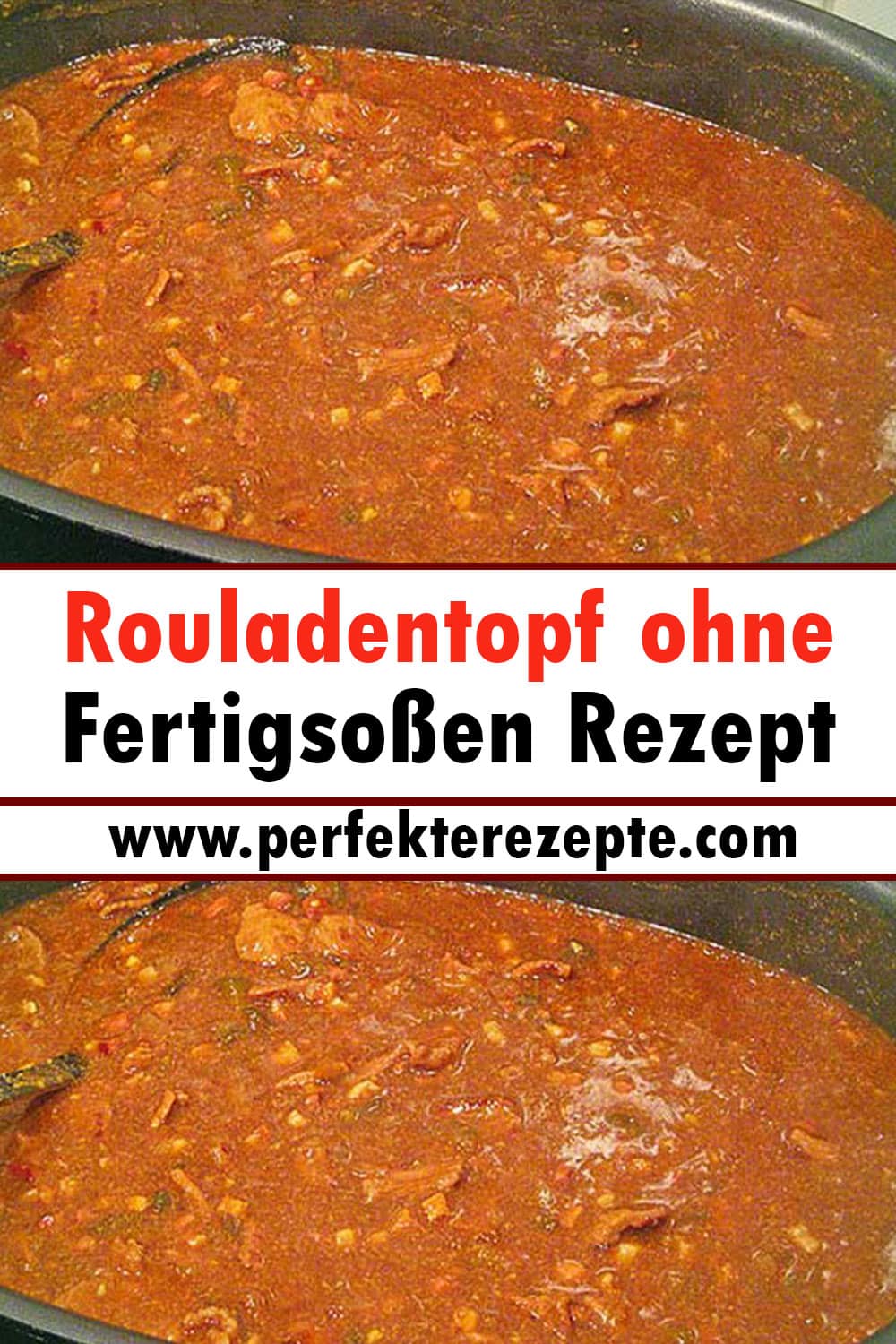
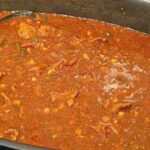
Rouladentopf ohne Fertigsoßen Rezept
- Total Time: 30
- Yield: 2 Portionen 1x
Description
Zarte Rindfleischstreifen schmiegen sich in eine sämige, dunkle Sauce aus Rotwein, Brühe und Zwiebeln. Knuspriger Bacon, würzige Gurken und sanfter Senf sorgen für ein pikantes, herzhaftes Aroma mit feinem Pilz-Nuancen.
Ingredients
- 500 g Roulade(n) vom Rind in feine Streifen geschnitten
- 4 Zwiebel(n), in dünne Halbmonde geschnitten
- 200 g Bacon, gewürfelt
- 2 Gewürzgurke(n), gewürfelt
- 2 EL Senf
- 750 ml Brühe
- 150 ml Rotwein
- evtl. Steinpilze, getrocknete, vorher in Wasser eingeweicht
- evtl. Speisestärke
- evtl. Sahne
- Öl
- Salz und Pfeffer
Instructions
- Beginnen Sie, indem Sie alle Zutaten vorbereiten: Schneiden Sie das Rindfleisch in feine Streifen, die Zwiebeln in dünne Halbmonde, den Bacon in Würfel und die Gewürzgurken ebenfalls in kleine Würfel. Falls Sie getrocknete Steinpilze verwenden, weichen Sie diese in etwas Wasser ein, bis sie weich sind, und bewahren Sie das Einweichwasser auf.
- Erhitzen Sie etwas Öl in einem großen Bratentopf auf hoher Stufe. Braten Sie die Rinderrouladenstreifen portionsweise an, sodass sie von allen Seiten kräftig gebräunt sind. Nehmen Sie die angebratenen Fleischstreifen anschließend aus dem Topf und stellen Sie sie beiseite.
- Geben Sie nun die gewürfelten Baconstücke in den gleichen Topf und braten Sie diese bei mittlerer Hitze an, bis sie leicht knusprig sind und ihr Fett ausgelassen haben.
- Fügen Sie die geschnittenen Zwiebeln zum Bacon hinzu und braten Sie alles gemeinsam an, bis die Zwiebeln glasig und leicht gebräunt sind. Rühren Sie dabei regelmäßig um, damit nichts anbrennt.
- Geben Sie die angebratenen Rouladenstreifen zurück in den Topf zu Bacon und Zwiebeln. Gießen Sie den Rotwein dazu und lassen Sie ihn kurz aufkochen, sodass der Alkohol verdampft.
- Löschen Sie die Mischung mit der Brühe ab und rühren Sie gut um. Fügen Sie die gewürfelten Gewürzgurken und – falls verwendet – die eingeweichten Steinpilze samt Einweichwasser hinzu.
- Rühren Sie den Senf unter und würzen Sie das Gericht großzügig mit Salz und Pfeffer. Reduzieren Sie die Hitze und lassen Sie den Rouladentopf bei geringer Temperatur mit geschlossenem Deckel etwa 60 Minuten sanft köcheln, bis das Fleisch schön zart ist. Rühren Sie gelegentlich um und prüfen Sie, ob eventuell noch etwas Flüssigkeit hinzugefügt werden muss.
- Nach der Garzeit können Sie die Sauce nach Belieben mit etwas in kaltem Wasser angerührter Speisestärke binden, indem Sie sie unter ständigem Rühren einlaufen lassen und die Sauce nochmals kurz aufkochen.
- Optional können Sie die Sauce mit einem Schuss Sahne verfeinern, um sie noch cremiger zu machen. Schmecken Sie das Gericht zum Abschluss nochmals mit Salz, Pfeffer und gegebenenfalls zusätzlichem Senf ab.
- Servieren Sie den Rouladentopf heiß, beispielsweise mit Nudeln, Spätzle, Salzkartoffeln, einer Scheibe frischem Brot oder Rotkohl als Beilage. Guten Appetit!
Notes
Wenn Kinder mitessen oder Sie keinen Alkohol verwenden möchten, können Sie den Rotwein einfach durch die gleiche Menge Brühe ersetzen. Der Rouladentopf lässt sich sehr gut vorbereiten und schmeckt aufgewärmt oft sogar noch besser. Getrocknete Steinpilze geben dem Gericht ein besonders feines Aroma, sind aber optional. Die Sauce kann nach Geschmack mit etwas Sahne verfeinert oder mit Speisestärke angedickt werden.
- Prep Time: 10
- Cook Time: 20
- Category: eintopf
Nutrition
- Serving Size: 2 Portionen
- Calories: 350-450
- Sugar: 3-8g
- Sodium: 500-800mg
- Fat: 17-25g
- Saturated Fat: 7-11g
- Carbohydrates: 30-40g
- Fiber: 2-5g
- Protein: 20-30g
- Cholesterol: 60-100mg




